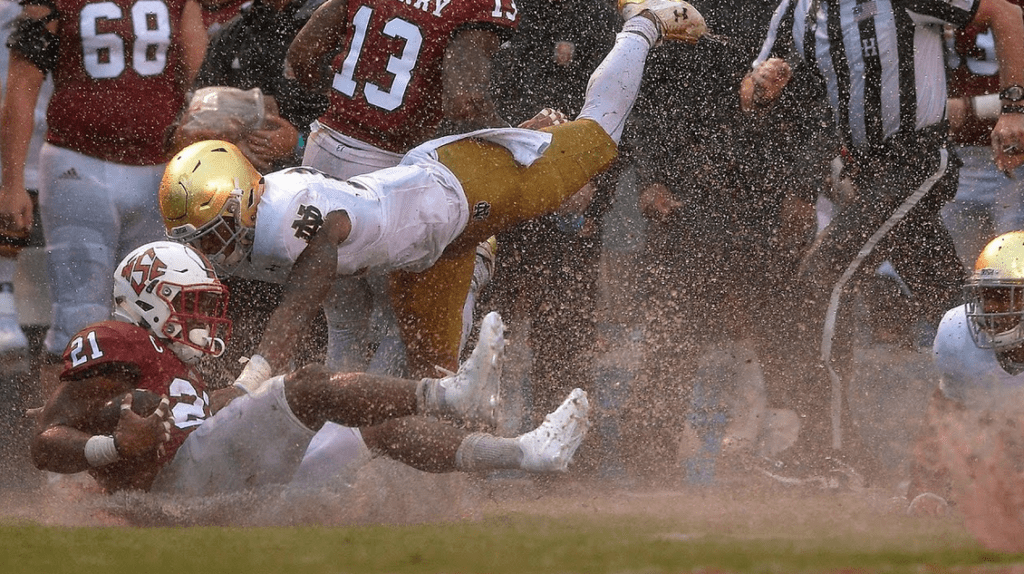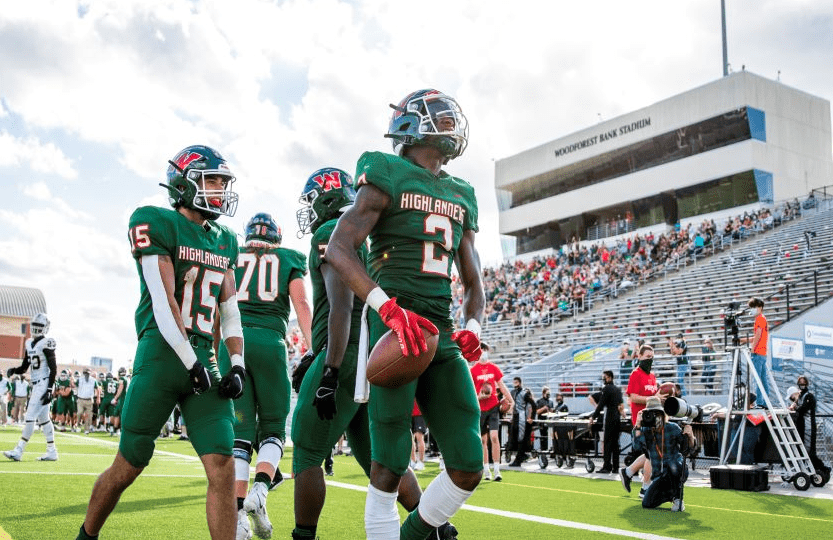If you love watching American football, here’s how long you can expect to be in front of the TV watching college football games or physical live matches this season.
In the US, fans love sitting down on Saturdays in the fall to watch college football. They hold the remote in one hand and a beer in the other, enjoying hours of games. This season, the games might be different in length.
College football used to be the longest game among major American sports. It was longer than the NFL and over an hour longer than college basketball and NBA games. It was even a bit longer than baseball games.
So, how long do these college football games actually last? Well, according to the NCAA’s latest stats, the average game takes 3 hours and 22 minutes. This is four minutes longer than it was just five years ago.
But things might change going forward. The NCAA made a rule change for the 2023 season that affects how the game clock is managed. Starting this year, the clocks will keep running after a team gets a first down, unless there’s less than 2 minutes and 30 seconds left in either half.
Before this change, when a team got a first down, the game clock and play clock used to stop. They only started again when the referee signaled for them to start, usually after the umpire placed the ball between the hash marks. Because of this difference, college football games ran about 20 real-life minutes longer than NFL games.
How long is halftime in USA College Football?
As stated in the NCAA rules, halftime during college football games is set at 20 minutes. Yet, it can be made shorter if both schools’ administrations agree before the game.
This longer halftime duration provides an opportunity for the bands of both schools to perform on the field and entertain the fans.
In NFL games, the halftime break lasts for 12 minutes. However, this time is increased by more than double during the Super Bowl, extending it to 30 minutes. This extended break allows for a larger halftime show in the Super Bowl, making it a more significant part of the event.
Overtime in American College Football
If the game is tied when regulation time ends, both teams will enter an overtime period, similar to the NFL.
However, unlike the professional game, ties are not allowed in college football after the first overtime.
During the first two overtime periods, each team gets a chance to score starting from the opponent’s 25-yard line, unless a penalty forces them farther back on the field.
Each team has one timeout per overtime period. These timeouts can’t be carried over from the regular game or between overtime periods.
A team continues to possess the ball until it fails to score, doesn’t get a first down, or loses the ball.
From the second overtime onward, teams are required to attempt a two-point conversion after scoring a touchdown.
Starting in the third overtime period, teams must alternate running two-point conversions, without traditional offensive touchdown attempts.
How long is College Football Season in the US?
The college football season in the United States typically spans from late August or early September to December. It generally includes regular-season games, conference championships, and various bowl games.
The exact duration can depends on the specific team’s schedule, conference affiliations, and whether the team qualifies for postseason play. Regular-season games are typically played over a 12-week period, with teams having one bye week.
After the regular season, teams that qualify participate in conference championship games and potentially bowl games, which can extend the season into January.
What happens if there is bad Whether in College Football game?
If bad weather strikes during a college football game, several outcomes can arise. Initially, the game might experience a delay to ensure the safety of everyone involved, as well as the spectators. This break allows time for the bad weather conditions to pass before play resumes.

In more extreme situations where the rainy weather persists, the game could be postponed to a later date. Such a decision depends on factors like the severity of the weather and the availability of the stadium and teams.
Bad weather can also dramatically alter the field conditions, making it slippery and hazardous for players. In some instances, the field might become unplayable due to excessive rain or flooding, potentially resulting in changes to the game schedule.
The game plan itself might need adjustments to accommodate the weather. Passing and kicking can be notably challenging in heavy rain or strong winds, prompting teams to modify their strategies accordingly.
Players might need to switch equipment or uniforms to better suit the conditions. For instance, longer cleats could be employed for improved traction on a wet field.
Furthermore, attendance might decrease as fans choose not to brave the harsh conditions for their own comfort and safety.
The bad weather condition can alter the flow of the game, affecting the style of play. Teams might opt for more running plays and shorter passes in response to wet and windy conditions, reshaping the overall dynamics of the match.
Conclusion
All these issues above determines how long you can expect to watch a live football game. You can also be in front of the TV watching college football games this season for 2hrs 30mins per game.
Ultimately, the visibility of the field and ball can impact refereeing decisions on plays, penalties, and other crucial calls, adding an additional layer of complexity to the game.
Lastly, the approach to used to address bad weather during a college football game is determined by considerations of player well-being, logistical necessities, and the particular policies of the involved conference and schools.
Helpful Guides
- How Long Does a High School Football Game and Season Last?
- High School Soccer Time: How Long is Grade 9-12 Football Game
- Tubidy Mp3 Music Download, Mp4 Video Streaming for Mobile device
- StreamWoop Sports Streaming App & Channels to Watch Games Online
- Best online LiveSport TV for Live Streaming, Analysis, Scores And Results
- StreamWoop Sports Streaming App & Channels to Watch Games Online
- Mobile Gaming Makes 77% of the entire Industry’s Revenue in games
- High school football 2023: Week-by-week schedules, results for area teams
- How to Watch Live Streaming World Cup Football and NFL Games on Reddit, CableTV







